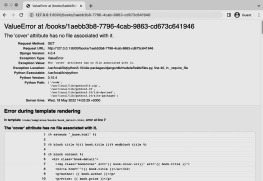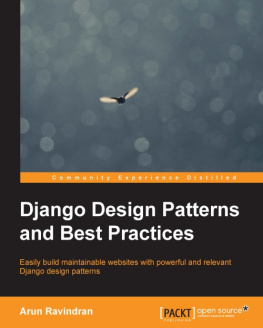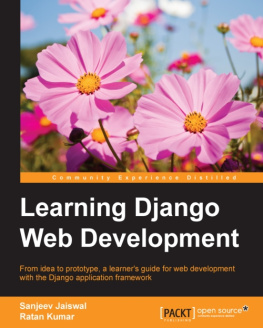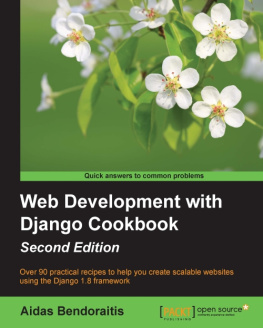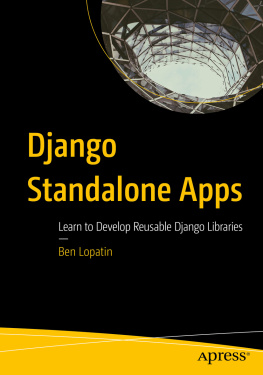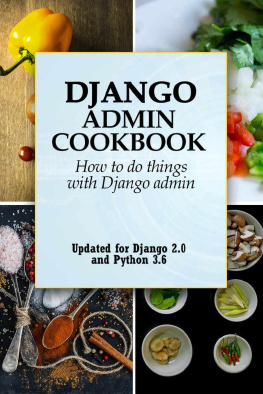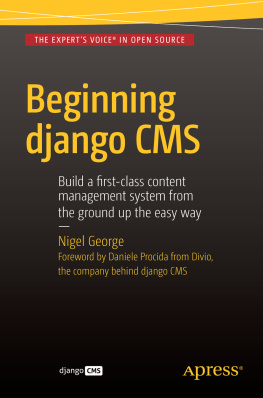Daniel Greenfeld - Two Scoops of Django: Best Practices For Django 1.5
Here you can read online Daniel Greenfeld - Two Scoops of Django: Best Practices For Django 1.5 full text of the book (entire story) in english for free. Download pdf and epub, get meaning, cover and reviews about this ebook. year: 2013, publisher: CreateSpace Independent Publishing Platform, genre: Romance novel. Description of the work, (preface) as well as reviews are available. Best literature library LitArk.com created for fans of good reading and offers a wide selection of genres:
Romance novel
Science fiction
Adventure
Detective
Science
History
Home and family
Prose
Art
Politics
Computer
Non-fiction
Religion
Business
Children
Humor
Choose a favorite category and find really read worthwhile books. Enjoy immersion in the world of imagination, feel the emotions of the characters or learn something new for yourself, make an fascinating discovery.

- Book:Two Scoops of Django: Best Practices For Django 1.5
- Author:
- Publisher:CreateSpace Independent Publishing Platform
- Genre:
- Year:2013
- Rating:4 / 5
- Favourites:Add to favourites
- Your mark:
Two Scoops of Django: Best Practices For Django 1.5: summary, description and annotation
We offer to read an annotation, description, summary or preface (depends on what the author of the book "Two Scoops of Django: Best Practices For Django 1.5" wrote himself). If you haven't found the necessary information about the book — write in the comments, we will try to find it.
Two Scoops of Django: Best Practices For Django 1.5 is chock-full of material that will help you with your Django projects.
Well introduce you to various tips, tricks, patterns, code snippets, and techniques that weve picked up over the years.
This book is great for:
- Beginners who have just finished the Django tutorial.
- Developers with intermediate knowledge of Django who want to improve their Django projects.
We have put thousands of hours into writing and revising its 200+ pages of concise, example-packed text.
What is everyone saying about Two Scoops of Django?
- A single read-through of Two Scoops of Django gave me so many lightbulbs and tips; I had to go back for a second helping. -- Lynn Root, Red Hat engineer and PyLadies ambassador.
- Ha ha, I learned something in the first chapter. Awesome. -- Zed Shaw, Author of Learn Python the Hard Way.
- Two Scoops should provide some food for thought and usable recommendations for anybody using Django regularly. -- Malcolm Tredinnick, Django Core Contributor
- Make sure you have your favorite project next to you while reading. Youll be doing some rewriting. -- Bryan Veloso, GitHubber, PyCon PH Keynote Speaker
- If I could time travel, the first thing Id do would be give my younger self a copy of this book, and make him read it. -- Randall Degges, Passionate Python Hacker
- You know those lessons you learn when projects blow up in your face? This book contains several projects worth of such lessons. -- Lennart Regebro, author of Porting to Python 3
- This book should prove to be an amazing resource for any new-to-Django developer that picks it up. -- Kenneth Love, Creator of Getting Started with Django
Daniel Greenfeld: author's other books
Who wrote Two Scoops of Django: Best Practices For Django 1.5? Find out the surname, the name of the author of the book and a list of all author's works by series.

